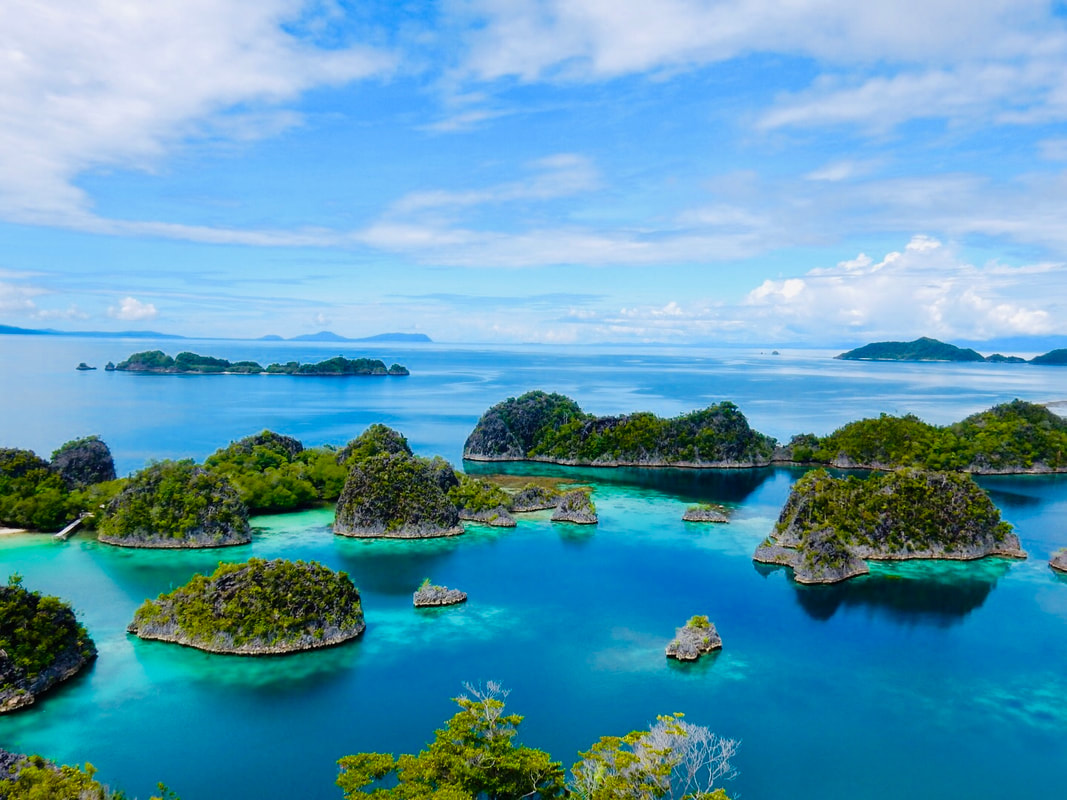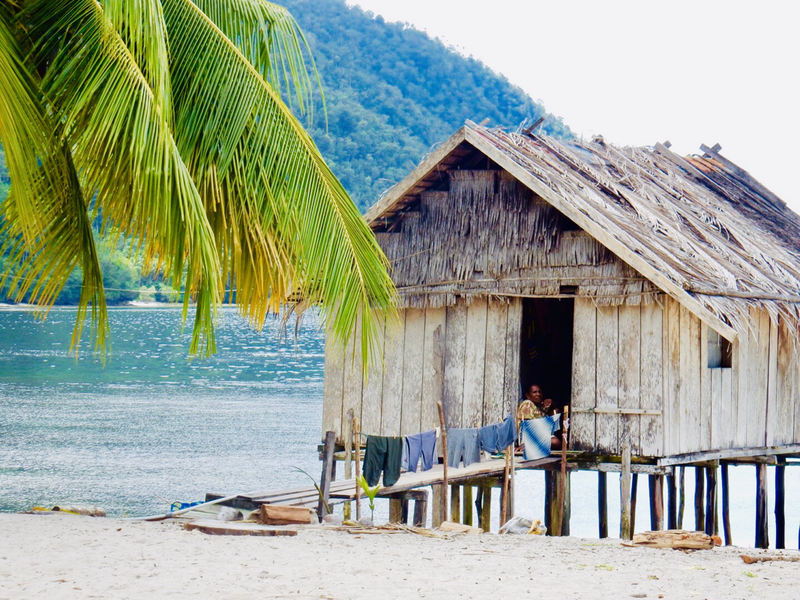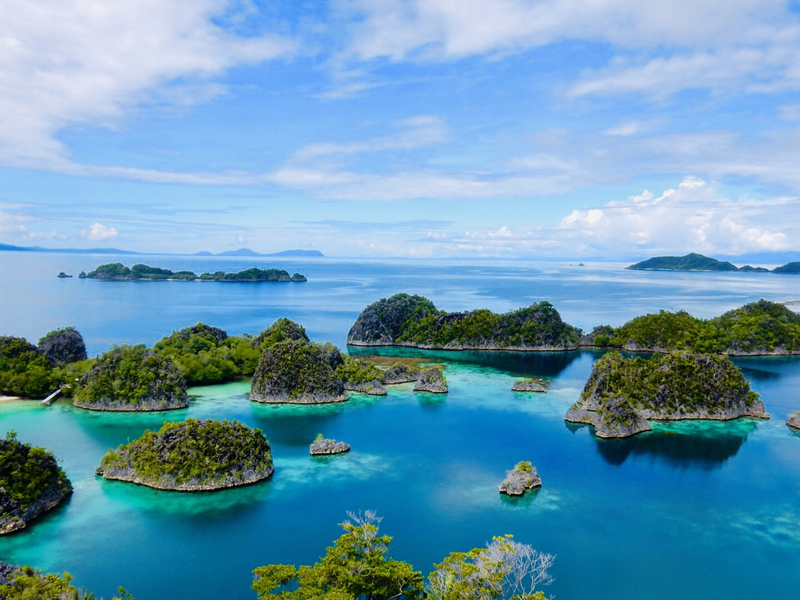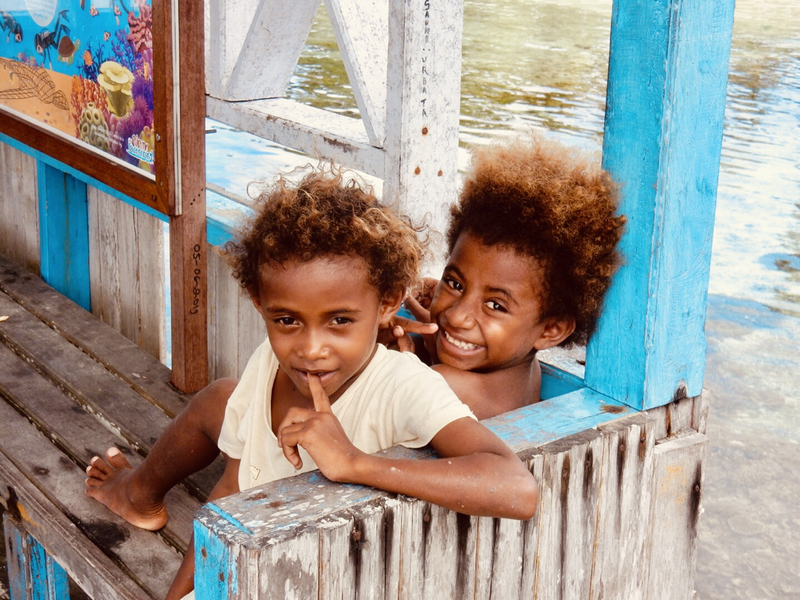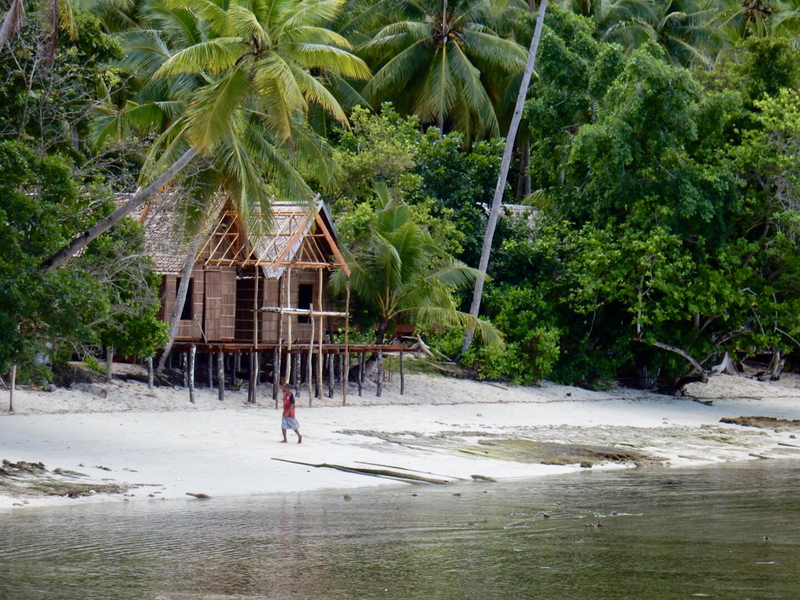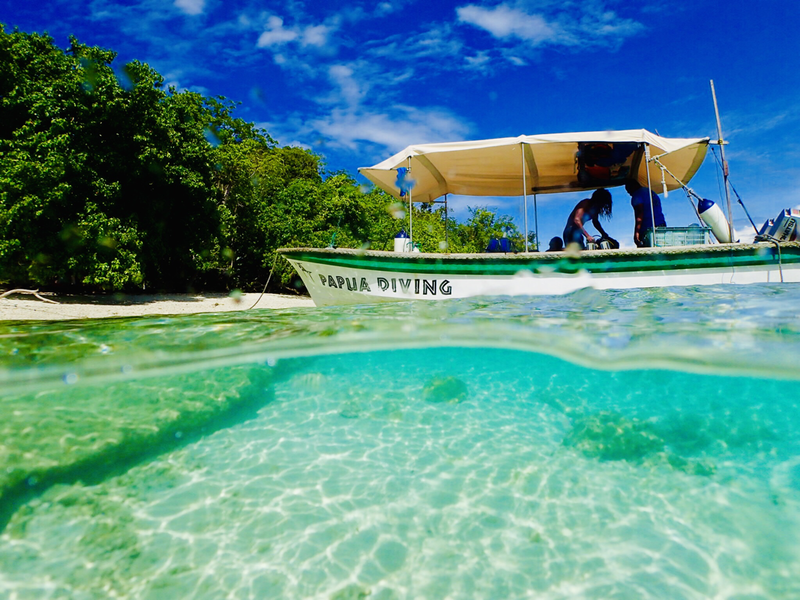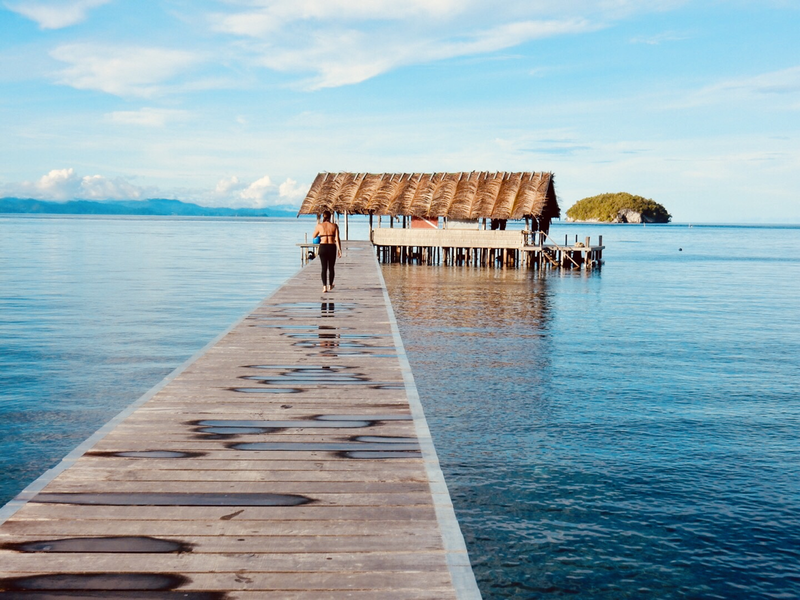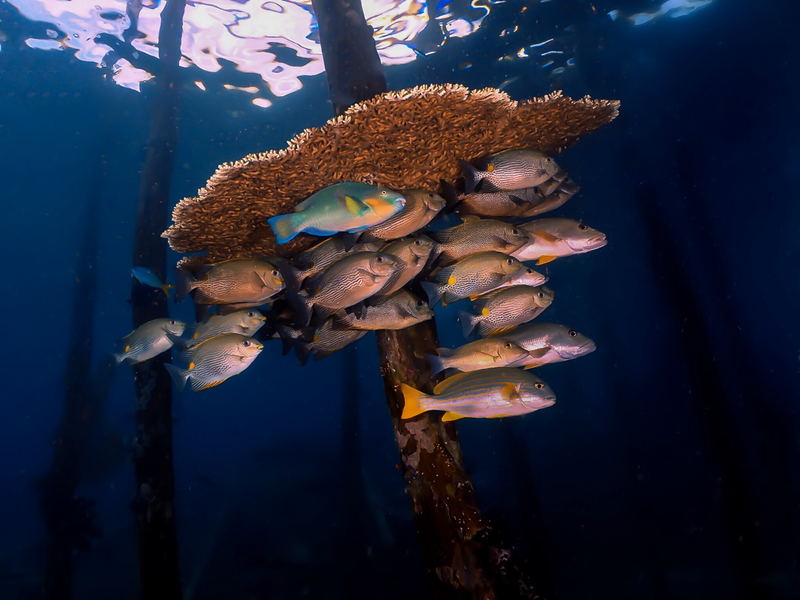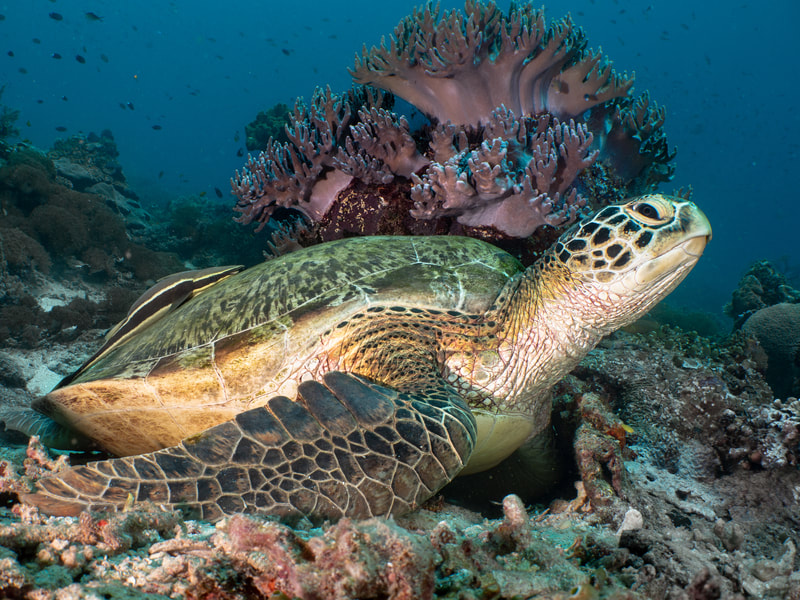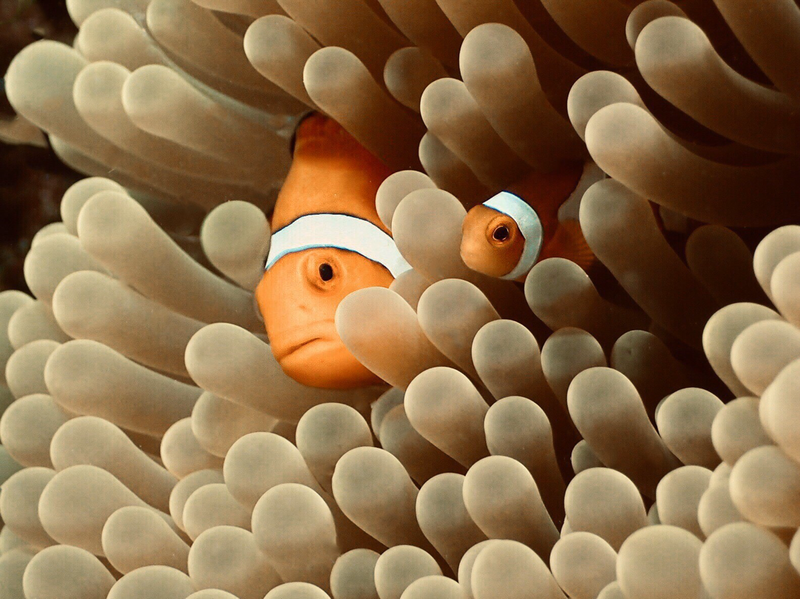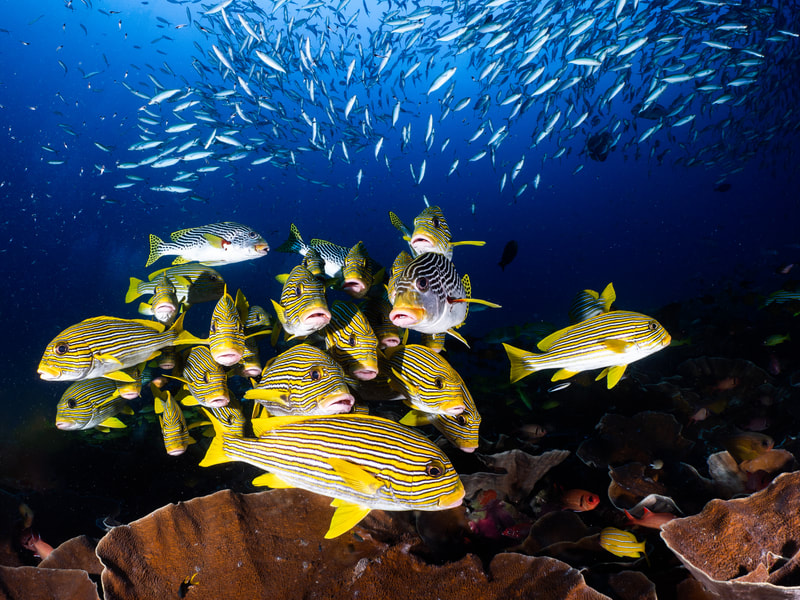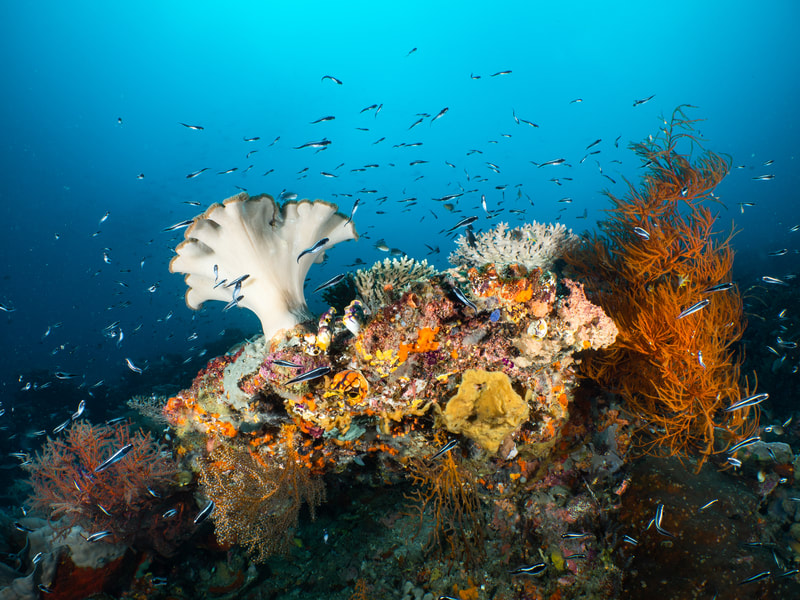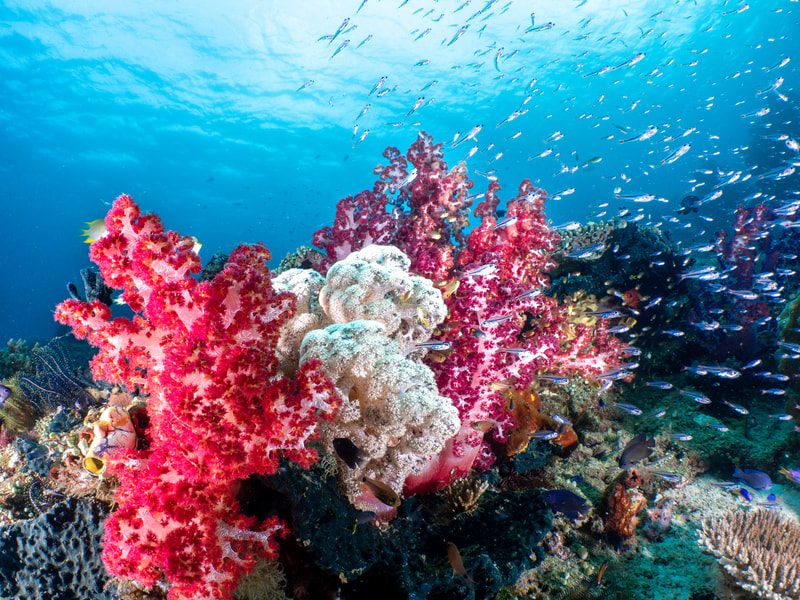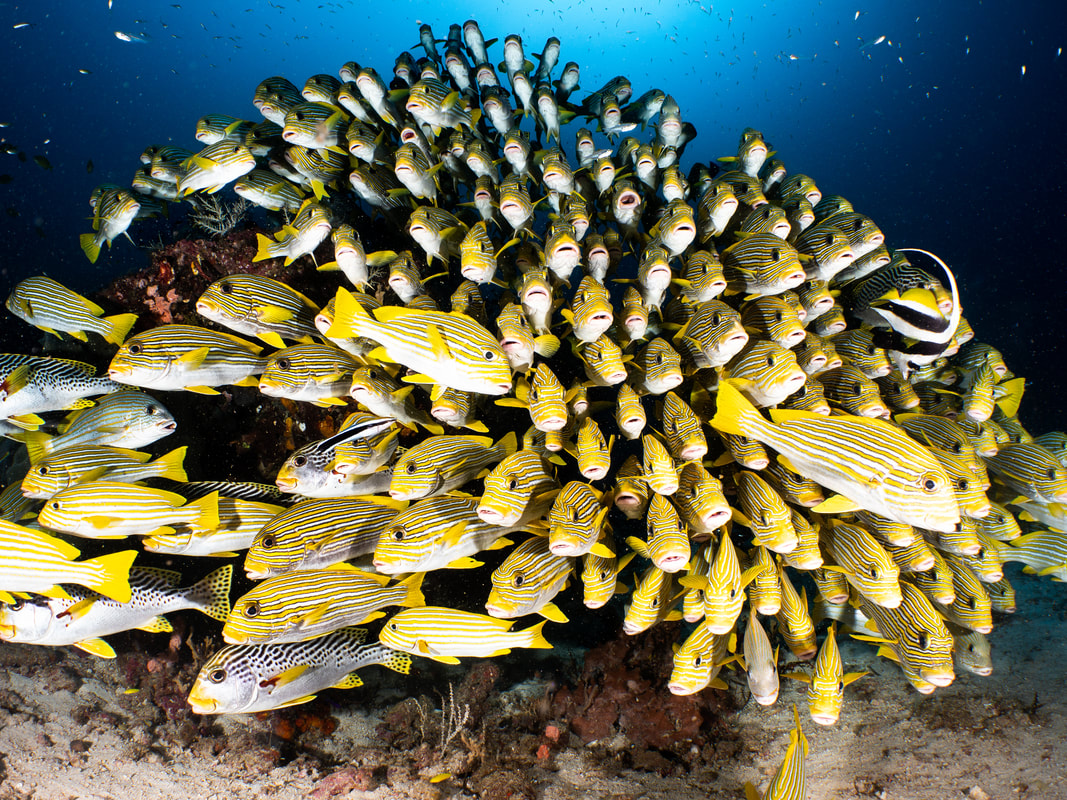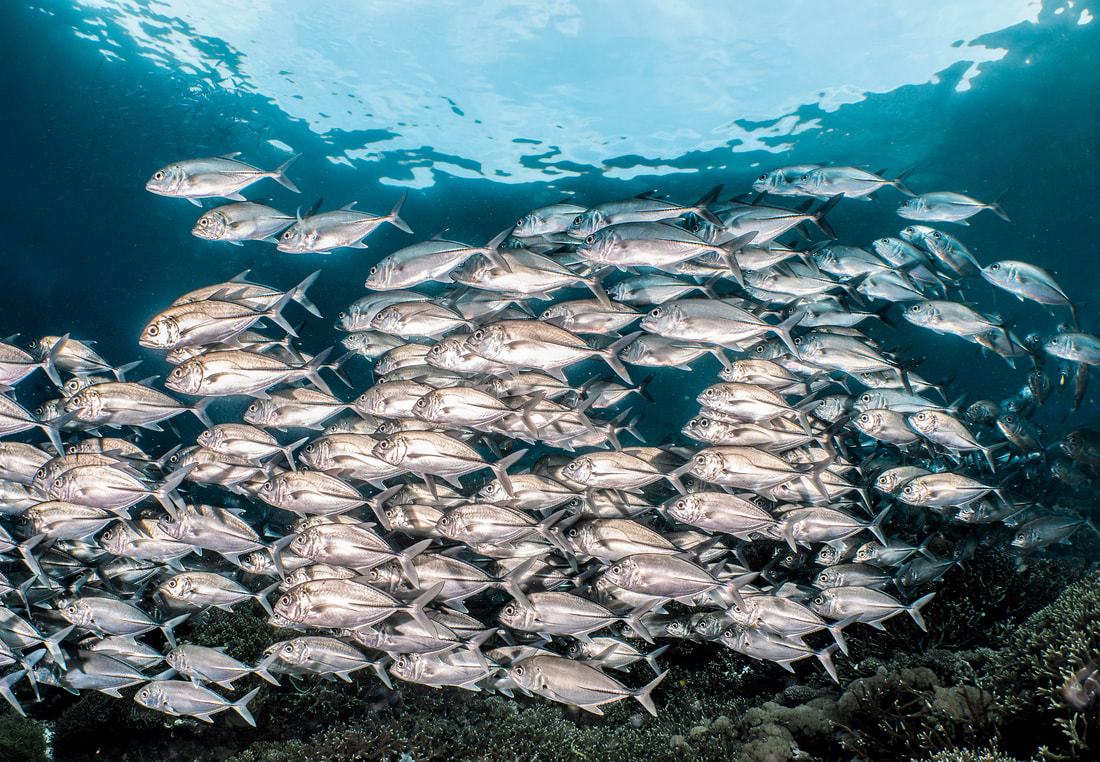|
Known as the birds head peninsula because of its shape, West Papua encompasses the islands of Misool, Salawati, Batanta and Waigeo. These islands, collectively known as Raja Ampat and affectionately referred to as the ‘Four Kings’, harness the highest concentration of marine diversity anywhere on planet earth. Previously known as Irian Jaya, West Papua was actually under control of the Dutch, forming part of what was the Dutch East Indies. It was not until 1969 that the Dutch withdrew from the region and handed it over to Indonesia. Papua was actually never part of Indonesia prior to Dutch colonization, because Indonesia didn’t actually exist then. The 1940’s saw the formation of Indonesia as an independent republic, following which the United Nations forced the Dutch to give up West Papua. To cut a long story short, Indonesia then annexed West Papua as a province. West Papua lies in the Asia Australian transition zone and actually shares the same tectonic plate as Australia, which can somewhat explain why the plants and animals here have similarities. Tree kangaroos, wallabies and other marsupials are common, but it is the region’s phenomenal biomass and endemic marine species that puts Raja Ampat on top of every divers ‘must dive’ destination. Indisputably remote, wild and mysterious, the reefs and islands here are mind-blowingly beautiful and have so far escaped the over-tourism evident in other parts of Indonesia. Although part of Indonesia, the Papuan culture here is dominant. The shy, warm smiles and generous hearts of the local Papuan people, combined with the region’s wild landscape make this a very special place to visit. Whether your out diving or on a quest to see the bird of paradise, Raja Ampat will have you spellbound in a heartbeat. Where we stayed While many divers choose to dive Raja Ampat by liveaboard, we chose a more personal land based approach and stayed at Sorido Bay Resort on Kri Island. Just south of Waiego and run by the very reputable Papua Diving, the diving here at Kri has some of the highest marine diversity anywhere on planet earth. The resort’s local dive site Cape Kri has set the world record for the highest number of fish species, with scientist Dr Gerald Allen counting over 374 species on a single tank dive. The reefs around Kri boast an array of life from various shark species, manta ray, pygmy seahorse (almost in plague proportions), and incredible macro life. The resort is owned by Papua’s own ‘Indiana Jones’ Max Ammer who came to the region over 21 years ago in search of WWII plane wrecks. Having personally discovered hundreds of wrecks and the majority of dive sites in the region, Max is deservingly the pioneer of Papuan diving. Not only has he personally discovered and named the majority of dive sites in this untamed region, but has also made it his mission to conserve its precious environment through the establishment of the Raja Ampat Research and Conservation Centre (RARCC). The RARCC is led by Max himself and consists of a small team who dedicate their time to sustainable initiatives that both protect the environment and provide opportunities and training to the local Papuan people. Some of the staff at Sorido Bay Resort were previously involved in shark finning, blast fishing, illegal logging and turtle poaching, but through Max’s efforts the local people now generate an income by using their knowledge of the environment to guide guests and undertake conservation work. Currently, 90 percent of resort staff are Papuan. While the RARCC’s current focus is on building a school and training the local Papuans in fibreglass boat building, carpentry and guiding guests for diving and kayak tours, Max is also building electric dive boats and has future plans to train local Papuans to pilot helicopters - part of his ambitious Bell 47 project where he is rebuilding three Bell 47 helicopters. Once rebuilt, the helicopters will be used to undertake air patrols to determine and deter illegal fishing activities, support search and rescue, and to assist scientists and other researchers to more easily access remote parts of the region. Catering to a maximum of 18 divers, the resort offers sophisticated dive and stay packages in luxury villas nestled delicately amidst the jungle clad shoreline overlooking the lagoon, whose daily residents include hunting black tip sharks, rays and trevally. The resort also has an amazing array of wildlife on land including; numerous resident Cuscus, Shel Ducks, Coconut Crabs, Monitor Lizards, Papuan Hornbills and Beach Kingfishers. As for the diving, well all we can say is wow! The reefs here are diverse; from slopes, canyons, seamounts, drifts and calm lagoons; the sheer abundance of fish in these waters is difficult to match. This, combined with the quality and diversity of its coral species and macro critter life makes for a thrilling diving adventure. From the comprehensive dive briefing from Resort Manager Chris Harvey, to the all Papuan dive team who have a keen eye for everything from sharks to pygmy seahorse, this is a flawless dive operation. Diving here is unique, not only because of the resort’s outstanding location but because of the expert local knowledge of the dive sites, marine life and currents which comes from more than 21 years experience in the region. Whilst it’s difficult to choose, here are a few of our favourite dive sites Cape Kri This is of course the dive site where Dr Gerald Allen set the world record by counting over 374 fish species on a single tank dive. After entering from the south-east side of Kri Island, you make your way to the drop off where a steep sloping reef decends to around 40 meters. Soft and hard corals abound, where schools of small fish bring in hunting giant trevallies, spanish mackerel and tuna. White tip, black tip and grey reef sharks are also seen, along with passing hawksbill turtles and schools of ribbon sweetlips. The site also harbours an impressive range of macro critters, so be sure to keep an eye out for scorpion fish, nudibranch and delicate sea fans harbouring pygmy seahorse as you gradually ascend to your safety stop. Sardines Best suited to experienced divers, particularly around the full or new moon when currents tend to run faster, this site can harness so many fish that they block out the sunlight! Best dived when the current is running from east to west, be ready to hook in and wait for the show. Numerous species of schooling fusiliers, trevally and barracuda are common, alongside black tip, white tip and grey reef sharks, bump head parrot fish, bat fish and napoleon wrasse. Blue Magic This submerged seamount offers healthy and diverse coral gardens alive with the smallest of critters, along with patrolling grey reef sharks, hunting tuna, barracuda and the enigmatic Manta Ray (in season). The reef has a mix of hard and soft coral species including brain and table corals, gorgonian fans and large coral bommies carpeted with a myriad of soft coral species. This is a beautiful dive with something for everyone. Mikes Point Named after Max Ammer’s son Mike, this site is set around a small rock island. From the surface it’s hard to imagine what lies beneath, but as you descend, it’s unique topographical features reveal themself. The reefscape can be owed to the US Airforce who during WWII bombed the island repeatedly after mistaking it for a ‘disguised’ Japanese ship (good one!). The result is huge bommies now carpeted in stunning soft corals, overhangs, ledges, crevices and swim through caverns. A very interesting dive site with excellent fish biomass, particularly when the current is running. A dive site not to be missed. Manta slope A sandy slope who’s name says it all. On the sandy bottom you’ll find a few large bommies that form the cleaning stations for the reef and oceanic manta ray. While you’re more likely to see the mantas here during December to April when the waters are plankton rich, the manta are actually believed to be in the area all year round. Diving here in July didn’t disappoint. Melissa’s Garden About one hours boat ride from Kri (weather depending), in the area known as the Fam Islands you find this spectacular underwater garden. Named after Max Ammer’s daughter Melissa, this dive site is definitely worthy of the journey. Made up of three pinnacles, this site boasts an array of hard and soft corals along with gigantic fans. Macro lovers will find soft coral crabs, nudibranch, flatworms and a plethora of other tiny critters. In the blue there are huge schools of fusiliers alongside schools of grumpy looking barracuda. The shadows cast by the pinnacles also make for some interesting underwater photography. The Passage The passage is iconic when it comes to Raja Ampat dive sites. This narrow stretch of water between the islands of Gam and Waigeo with brisk currents and mangroves resembles more of a river than your traditional ocean dive site. We had heard that the photography opportunities here were fabulous, so we were disappointed when we were told the passage was no longer diveable. Needless to say that we were happy to choose another site once we heard the reason why. Anyone up to duelling with a large salt water crocodile? When to go
Unlike in the South of Raja Ampat where operators close from July to September, diving at Sorido Bay Resort is available all year round due to Kri Island’s protected location. While the best time to dive Raja Ampat is generally considered to be from November to May (because it’s Manta Season), a visit to Kri in June - October not only gives you some of the best visibility, but means you have the dive sites to yourself as the liveaboard boats have left the region. The resort is small and exclusive and often caters to documentary makers and film crews, so advanced bookings are essential. We visited in early July and experienced warm sunny days and light to mild winds, oh and we still saw the mantas ...... someone forgot to tell them it was no longer their season!! How to get to Kri There is no doubt that Raja Ampat is wild and remote, and getting there can be long and arduous particularly from European destinations. But it’s this distance and effort that keeps it beautifully secluded and untouched. Sorido Bay Resort can be reached in 2 hours by boat from Sorong harbour. Sorong’s Domine Eduard Osok airport is serviced domestically by Sriwijaya Air and Lion Air from Manado and Makassar, with connections to the major Indonesian cities of Jakarta and Bali. After an amazing week of the most magnificent diving, we would have to say that we are in love with this mysterious and wild part of the world. So would we return? Absolutely. Not just for the stunning diving, but for more of Max’s fascinating and side splitting stories! Want to know more? Book your stay at Sorido Bay Resort or their sister resort Kri Eco Resort by visiting www.papua-diving.com Ten percent of all resort profits go towards the excellent work of the Raja Ampat Research and Conservation Centre.
2 Comments
didier
18/7/2019 11:12:30 pm
hi. what is the problem with the passage ?
Reply
Neat
19/7/2019 07:01:34 am
Hi Didier, it looked like an amazing site, and we still would have loved to have dived it, however there is a very large Salt Water Crocodile there that has caused some divers some issues. There was apparently talk of the croc being relocated, but I’m pleased that the Govt has agreed to leave it in its natural habitat. Us divers can find other sites to dive.
Reply
Leave a Reply. |
|

